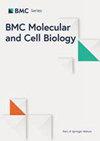ESCRT machinery plays a role in microautophagy in yeast
IF 2.4
3区 生物学
Q4 CELL BIOLOGY
引用次数: 7
Abstract
Background Microautophagy, which degrades cargos by direct lysosomal/vacuolar engulfment of cytoplasmic cargos, is promoted after nutrient starvation and the inactivation of target of rapamycin complex 1 (TORC1) protein kinase. In budding yeast, microautophagy has been commonly assessed using processing assays with green fluorescent protein (GFP)-tagged vacuolar membrane proteins, such as Vph1 and Pho8. The endosomal sorting complex required for transport (ESCRT) system is proposed to be required for microautophagy, because degradation of vacuolar membrane protein Vph1 was compromised in ESCRT-defective mutants. However, ESCRT is also critical for the vacuolar sorting of most vacuolar proteins, and hence reexamination of the involvement of ESCRT in microautophagic processes is required. Results Here, we show that the Vph1-GFP processing assay is unsuitable for estimating the involvement of ESCRT in microautophagy, because Vph1-GFP accumulated highly in the prevacuolar class E compartment in ESCRT mutants. In contrast, GFP-Pho8 and Sna4-GFP destined for vacuolar membranes via an alternative adaptor protein-3 (AP-3) pathway, were properly localized on vacuolar membranes in ESCRT-deficient cells. Nevertheless, microautophagic degradation of GFP-Pho8 and Sna4-GFP after TORC1 inactivation was hindered in ESCRT mutants, indicating that ESCRT is indeed required for microautophagy after nutrient starvation and TORC1 inactivation. Conclusions These findings provide evidence for the direct role of ESCRT in microautophagy induction.ESCRT机制在酵母的微自噬中发挥作用
背景微体自噬通过直接溶酶体/液泡吞噬细胞质货物来降解货物,在营养缺乏和雷帕霉素复合物1(TORC1)蛋白激酶靶点失活后,微体自吞噬得到促进。在出芽酵母中,微自噬通常使用绿色荧光蛋白(GFP)标记的液泡膜蛋白(如Vph1和Pho8)的加工分析进行评估。运输所需的内体分选复合物(ESCRT)系统被认为是微自噬所需的,因为在ESCRT缺陷突变体中,液泡膜蛋白Vph1的降解受到损害。然而,ESCRT对于大多数液泡蛋白的液泡分选也是至关重要的,因此需要重新检查ESCRT在微自噬过程中的参与。结果在这里,我们发现Vph1-GFP处理测定不适合估计ESCRT在微自噬中的参与,因为在ESCRT突变体中,Vph1-EGF在前极E类区室中高度积累。相反,通过替代衔接蛋白-3(AP-3)途径到达液泡膜的GFP-Pho8和Sna4-GFP在ESCRT缺陷细胞的液泡膜上正确定位。然而,在ESCRT突变体中,TORC1失活后GFP-Pho8和Sna4-GFP的微自噬降解受到阻碍,这表明ESCRT确实是营养饥饿和TORC1灭活后微自噬所必需的。结论这些发现为ESCRT在微自噬诱导中的直接作用提供了证据。
本文章由计算机程序翻译,如有差异,请以英文原文为准。
求助全文
约1分钟内获得全文
求助全文
来源期刊

BMC Molecular and Cell Biology
Biochemistry, Genetics and Molecular Biology-Cell Biology
CiteScore
5.50
自引率
0.00%
发文量
46
审稿时长
27 weeks
 求助内容:
求助内容: 应助结果提醒方式:
应助结果提醒方式:


